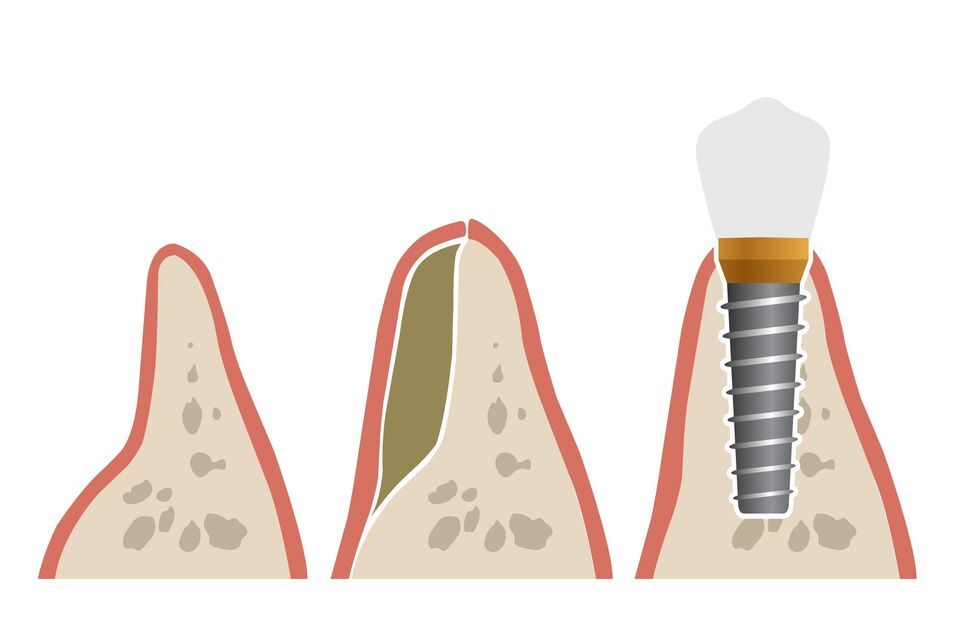When bone deterioration limits your ability to receive dental implants, a dental bone graft procedure can restore your candidacy. Dental implants are the gold standard in tooth replacement and can provide unparalleled support for crowns, bridges and dentures. By undergoing a bone graft procedure at Fort Bend Dental, you can experience the benefits of implants even after bone loss. At our two convenient locations in Richmond, Rosenberg, Missouri City, Aliana and Sugar Land, TX, we can perform every stage of dental implant treatment, allowing us to ensure you receive high-quality care from graft to restoration.

A bone graft can rebuild your jaw to provide a stable base for dental implants.
Benefit of Dental Bone Grafts
After a tooth is lost, the jawbone begins to deteriorate, as it does not receive stimulation from the tooth roots. If you have waited a long time to replace a missing tooth, you may not have enough tissue in the area to support an implant. A bone graft can provide a strong foundation for your implant, protecting the structure of your jaw and the longevity of the post.
Understanding Your Options
During a bone graft procedure, we can harvest bone from another area of the body and implant it into the jaw. Alternatively, we can use donor bone or a synthetic material. If we use your own tissue, we can remove a small block of bone from the chin. Also known as a block bone graft, this method is useful when artificial grafting material cannot adequately replace the amount of missing bone. It typically takes four months for the graft to sufficiently fuse before an implant can be placed. Over time, the body resorbs and replaces the material with living bone, restoring the jaw to its former strength.
Alveolar Ridge Preservation
Also known as a socket graft, this procedure is performed after a tooth extraction to maintain the space left by the tooth roots. While we can sometimes place an implant at the same time as extraction, this is not always the case. To protect the jaw after removing the tooth, we can pack the socket with bone grafting material. Over the next three to six months, the grafting material can fuse with living bone, allowing for more successful implant placement in the future.
If jawbone atrophy has affected your chances of receiving dental implants, the team at Fort Bend Dental can help.
Sinus Lift
Replacing teeth in the maxilla, or upper jaw, presents several unique challenges. One of the most significant issues is the proximity of the jaw to the maxillary sinus, which often rests directly above the roots of the upper teeth. This proximity can become especially pronounced after tooth loss and subsequent jawbone deterioration or sinus expansion. A sinus lift raises the floor of the sinus membrane and fills the space with bone grafting material to provide a sufficient base for implants. In some cases, implants can be placed at the same time as the graft, however, most patients require six to nine months before undergoing an implant placement procedure.
Restore Your Candidacy
Implant-supported restorations are the next best thing to having your own healthy, natural teeth. If jawbone atrophy has affected your chances of receiving dental implants, the team at Fort Bend Dental can help. We provide a variety of restorative services as well as mini dental implants for patients who are unable to undergo a grafting procedure. Find out more about your candidacy and the other procedures we offer by contacting us online or calling our Missouri City office at (281) 336-9899, Richmond office at (281) 519-3135, Rosenberg office at (281) 336-9971, or Aliana office at (281) 325-0024.

